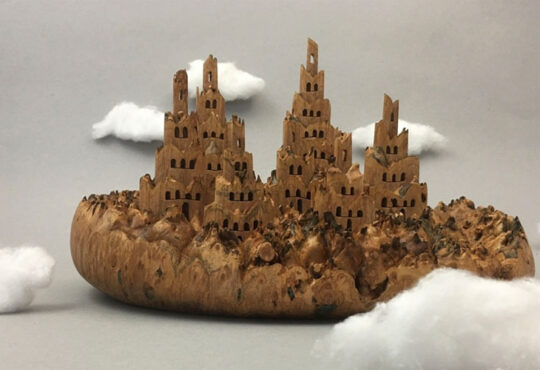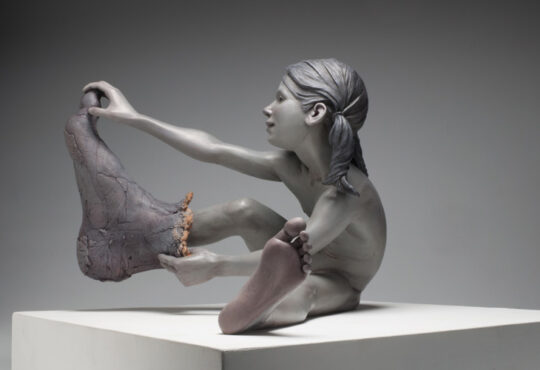Sculpting 101: How Do You Get Started?
Art is a very creative way to communicate with the world. Some artists left significant pieces that helped historians discover the circumstance in that era. So, it gradually helped map out the life of people throughout time.

If you want to produce art and be like the artists of old, don’t lose hope. With hard work and dedication, anyone can become a sculpting artist! It may sound difficult initially, but with essential knowledge, creativity, and originality, you can gradually produce your piece.
Before you start anything, it’s important to understand what sculpting is, find out what sculpting types suit you, and what materials work best for you. Here’s the necessary information about sculpting to help you get started.
What Is Sculpting?
The Cambridge dictionary defines sculpting as creating solid objects to form them into a particular shape to represent a person, idea, or thing. The materials vary depending on how the artist plans their work, but bronze is the most popular. However, you can be creative and add two or more materials to create more eye-catching, freestanding art.
In modern times, sculpting is utilized to make the designs more distinguished and unique. These items are displayed at home or in any place that attracts people. Along with unique statement candles or other attractive pieces, modern sculptures are perfect ornaments in your home.
Types
To create a perfect sculpture, artists first figure out the type of sculpture they want to work with. These types can be widely diverse in achieving the final product, which makes sculpting unique.
Carved Sculpture
This type of sculpting is the act of scraping away portions of the material to shape it into a different form from a solid material like bone, wood, or stone. Carved sculpture was also one of the most popular ways ancient societies portrayed different natural elements or religious characters that may have been used for ceremonial purposes.
Cast Sculpture
This type of sculpting involves melting down the materials used for the sculpture. The melted material will be poured into a mold and wait for it to cool until it hardens. Moreover, casting is considered an additive process because of its “build-up” technique in making a cast sculpture. Also, it’s more commonly used in modern sculpting.
Additive Sculpture
This type of sculpture involves adding material to “build up” and removing materials that involve “revealing” the sculpture. Unlike the other types of sculpture in this list, where an artist can choose a material and only take pieces of that, additive sculpture works by adding the material used to the piece itself.
Materials
Despite how it looks, sculpting is a fun activity or a hobby that allows artists to be creative with their work. As such, they can utilize different mediums they can work on, and sometimes it’s something you least expected.
However, there are also several materials that most artists commonly utilize. You may already have heard about wood and wax sculpting, but there are more common materials that you might have already seen. To help you, here’s a list of the popular materials they use for sculpting.
Alabaster
This material has two variances, soft opaque white and translucent stone, where light passes through. Both types have a marble-like variety of gypsum that also makes alabaster unique. It’s popular among artists because, despite its beautiful appearance, it’s one of the hardest stones for sculpting.
Bronze
This material is the most popular type among cast metal sculptures. You can work with this metal by casting, pouring the molten metal into a mold, and waiting for it to solidify. Its unique casting technique is significantly different from the usual chiseling and carving sculpting techniques.
Ceramic
Sculpting with ceramic also started long before sculpture became popular. It’s made by making clay sculptures, then placing them in an oven to harden the material. Due to its process, the clay becomes very solid and durable and will last very long. Depending on the artist’s creativity, you can mix clay with other materials, like metal, before placing the piece inside the oven.
Ivory
Ivory is the least popular in comparison to other materials due to its notoriety. However, this material has produced several significant sculptures in art history. Carvings from this material are considered the most luxurious treasure in the world.
The primary source of ivory is the elephant tusks, which have been used since the early times of Egyptian sculpture. Although ivory is a prized material, do keep in mind that the ivory trade is unethical as the majority of ivory that’s floating in the market is from illegally killed wild elephants. Make sure that you source ivory from legal, ethical means before proceeding.
Final Thoughts
Sculpting does take time to master and complete, but the time you invest becomes precious, which makes learning the art worth it. Moreover, you don’t have to rush learning sculpting and just enjoy the process at your own pace. With enough effort and determination, you’ll eventually master the art of sculpting. So, take your time figuring out what type of sculpting and material is for you!







